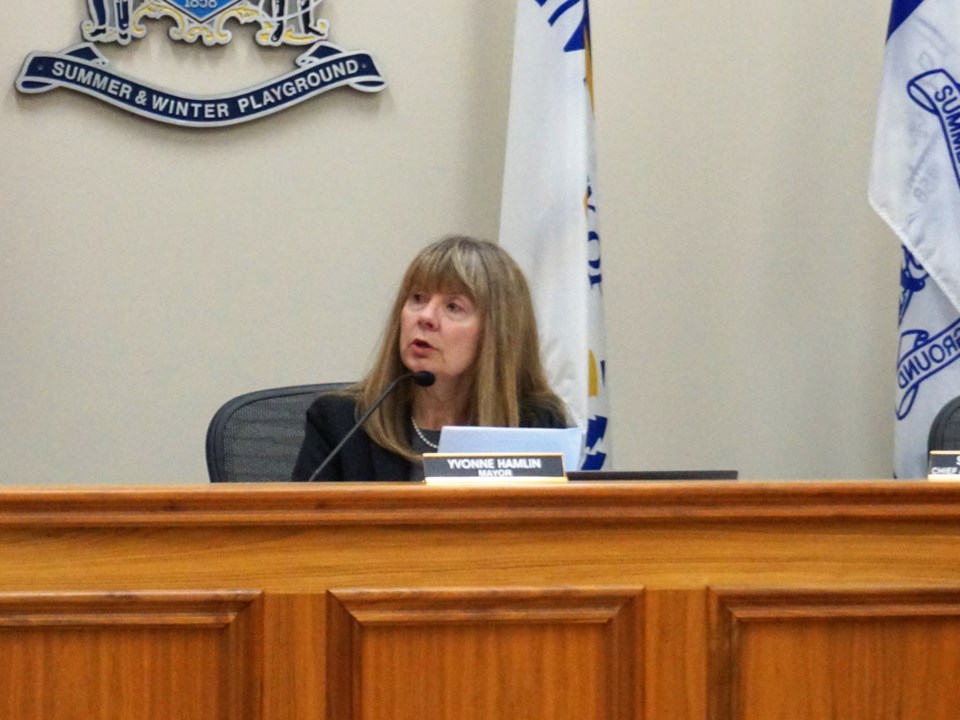While Collingwood was absent on the list of municipalities announced this week to get strong-mayor powers and be eligible for the provincial government’s new housing fund, Collingwood’s mayor says the announcement is exciting while the CAO wonders if there could have been better ways for the province to help municipalities with the affordable housing crisis.
Collingwood’ Mayor Yvonne Hamlin and Chief Administrative Officer Sonya Skinner are currently attending the Association of Municipalities of Ontario (AMO) conference, and spoke with CollingwoodToday about Premier Doug Ford’s announcement Monday to pledge $1.2 billion for a Building Faster Fund, where municipalities that meet their yearly provincial housing targets will get a slice of the fund, with bonuses if they exceed 100 per cent. He said the funding will last for three years and start flowing in 2024.
Ford also announced that 21 new municipalities — those with populations expected to hit 50,000 by 2031 — will get housing targets, and strong-mayor powers along with them. Collingwood was not on the list of municipalities.
“I think the province has been going down a list of municipalities (starting) with the biggest and moving down the list to be given these strong-mayor powers,” Hamlin said.
According to the first draft of a land needs assessment done through the County of Simcoe’s municipal comprehensive review, in 2021 Collingwood’s population sat at 26,050. By 2051, the population is expected to reach 43,230.
“That’s why we weren’t included, because we won’t have that (50,000) population within that time frame,” said Hamlin. “Will we get these powers? I don’t know.”
As of now, Collingwood does not have a provincially mandated housing target.
The town is working its way through the Official Plan process which does identify a target that attainable/assisted housing account for a minimum of 25 per cent of all new dwelling units built in Collingwood over the duration of the new plan.
However, the plan notes there is no existing statutory ability for the municipality to enforce that target.
According to a report completed by N. Barry Lyon Consultants and presented during an affordable housing open house last week, to accommodate the forecasted population growth to 2051, more than 10,000 new housing units will be required in Collingwood.
Hamlin says the general buzz around the conference on the announcement is cautiously optimistic.
“I think everyone was pleased to hear it. I think everyone is wondering, if this is enough to help my community,” said Hamlin. “There are a lot of unknowns at this time.”
“What are the priorities? Is it roads, or water treatment plants, or is it everything?” she said.
Ten per cent of the Building Faster Fund ($120 million) will be set aside to support housing in small municipalities that don't have provincial targets, and Hamlin is hopeful Collingwood could be included in that list.
“We haven’t seen the criteria yet for how (a municipality) would qualify for that funding, but we’re anxiously awaiting. We need a lot of infrastructure for the growth we have on the books,” she said.
Overall, Hamlin said she’s happy the province is coming to the table on the affordable housing issue.
“I think there’s quite an excitement around the province recognizing the role it has to play from an infrastructure perspective if we’re going to grow our population. It’s a huge step forward,” said Hamlin. “But the devil is, as always, in the details.”
Meanwhile, Skinner says that yesterday’s announcement doesn’t address Collingwood’s needs.
“It’s unclear to me how the strong-mayor powers link to housing success. Really, we’re looking for other tools that I think would be more impactful for Collingwood, like inclusionary zoning,” she said.
Inclusionary zoning is a regulatory tool that allows municipalities to require developers to either contribute a certain amount of their developments to affordable housing or sell off a percentage of units at a lower price point in areas located in a major transit station area. Currently, the tool is only permitted by the province to be used in Toronto, and will be rolled out in Kitchener, Waterloo and Cambridge in 2023.
“Some of those tools...(it was) a little underwhelming for me that they weren’t included,” said Skinner. “The funding announced is better than no funding, but I’d like to see it be higher because this is such a high priority.”
Skinner also wondered how far the $120 million for rural municipalities could go.
“Even if we are eligible, what will $120 million look like when it’s spread all across the province? There are a lot of rural municipalities,” she said.
The Town of Collingwood is currently collecting public feedback on their draft strategic options report, which will inform the town’s affordable housing master plan expected this fall. To read more on the report, click here.
To have your say, comments may be submitted via email until Aug. 31 for consideration to [email protected].
With files from Jack Hauen, The Trillium.


